The Giuoco Piano is one of the most popular openings in the chess world. It is derived from the Italian Game and is a favorite of most grandmasters and very strong players.
The name Giuoco Piano translates to “Quiet Game” and is quite apt considering the fact that the beginning phase of the game is played in a calm positional manner.
The starting moves of the Giuoco Piano first feature the Italian Game with 1. e4 e5 2. Nf3 Nc6 3. Bc4. With Bc4, we enter the Italian Game. From here Black has a few choices however, if they decide to continue with 3…Bc5, then we enter the Giuoco Piano.
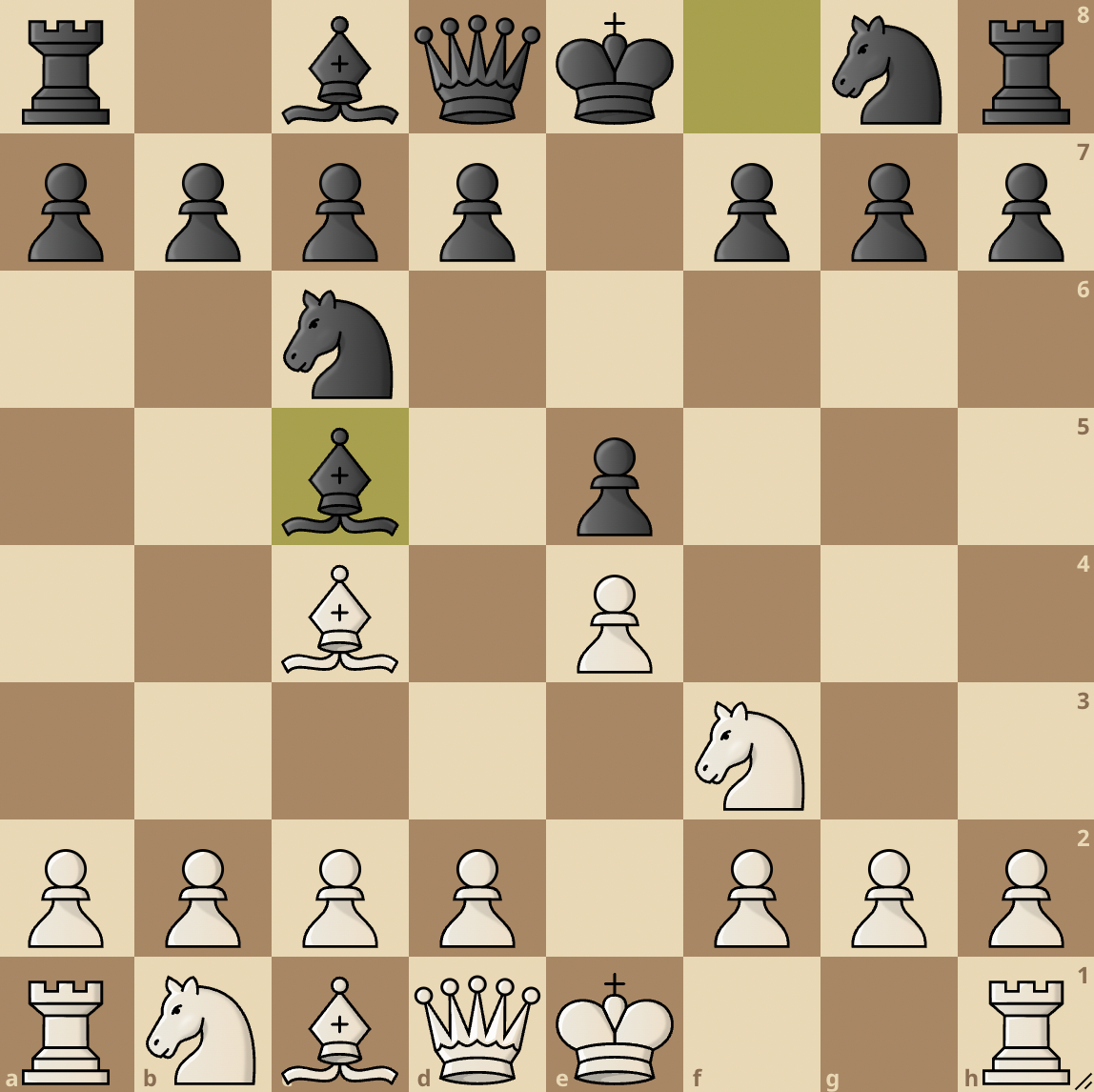
White’s main idea in the Giuoco Piano is to take control of the center with a d4 push. To achieve this, White usually starts with 4. c3.
4. c3 prepares for the d4 thrust, it also prevents the Black knight from jumping to the d4 square.
The best move for Black here is to develop with 4…Nf6, attacking the e4 pawn, and clearing the path for the Black king to castle to safety.
Then, White has two main moves in the resulting position, d3 and d4. We will now go through both of them.
5. d3

If White continues with 5. d3, then it is clear that they have decided to play a calm game that focuses on positional play.
However, this does not mean things can’t get heated up. For example, after d3, the best move for Black is to play…d6.
If they however decide to attack the center with a move like 5…d5 then they will be at a significant disadvantage. White will continue with 6. exd5 and after Black plays 6….Nxd5, White plays 7. Qb3 creating a double attack on the d5 knight. If the knight moves, the pawn on f7 will fall.
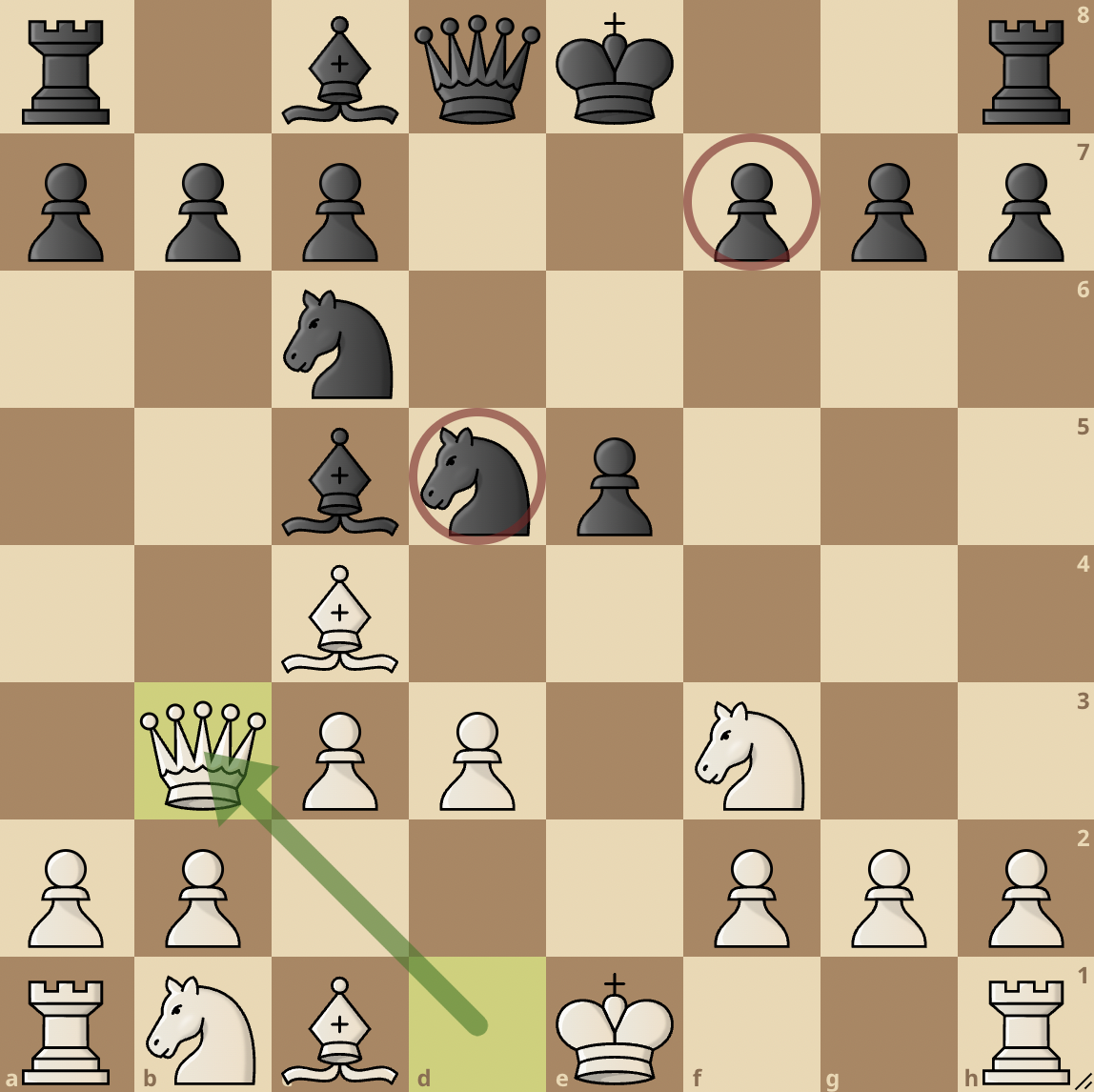
Moving the knight and giving up the pawn and castling rights is the best move for Black in this position. If they try to play a move like…Na5, then they immediately lose after White plays Qb5+, this is because the Black knight and bishop on a5 and c5 are hanging.
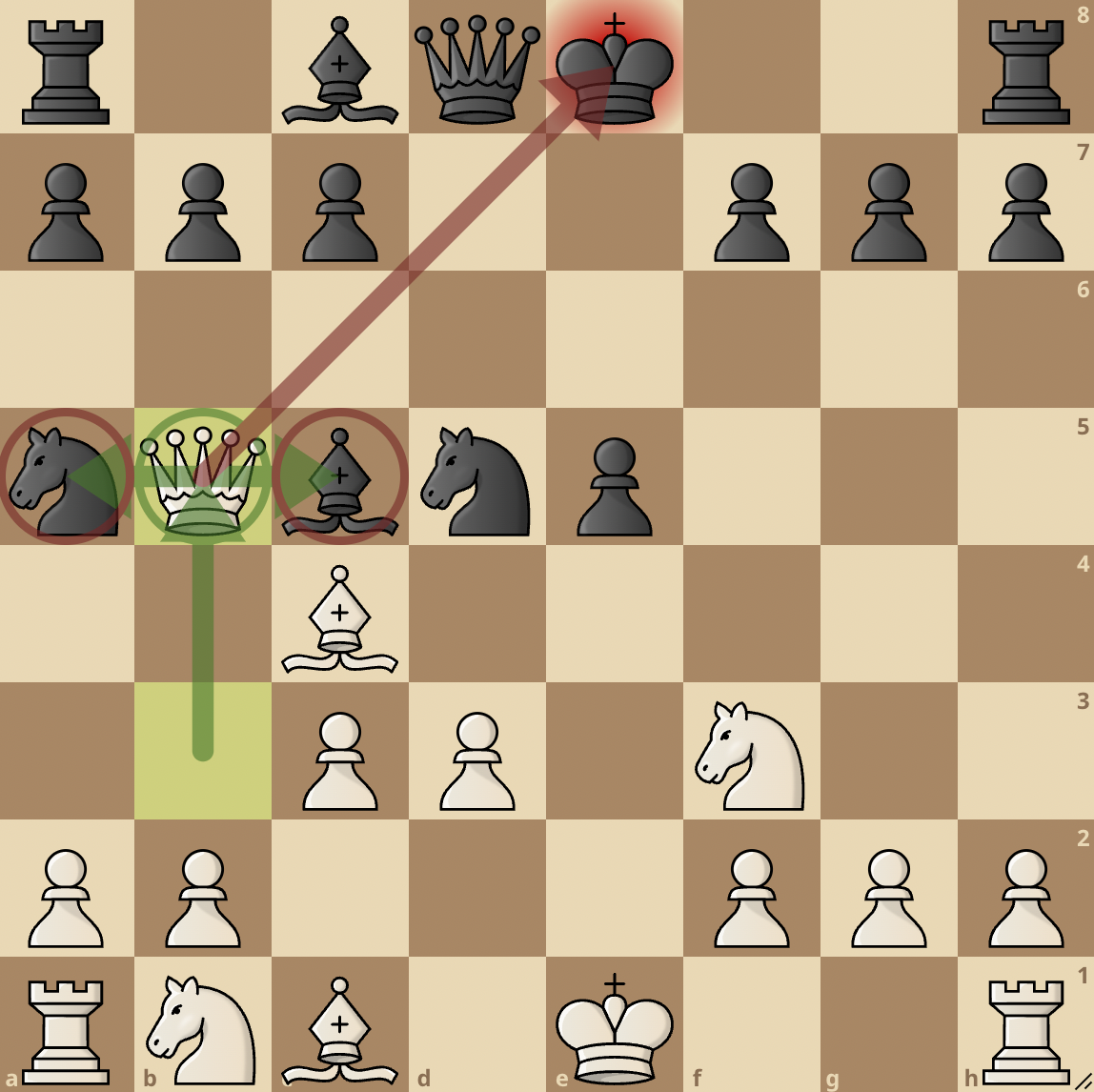
Now that we have seen why Black cannot just play any move, let’s go over the best move which is 5…d6.
5…d6

5…d6 is the most popular move for Black in this position. Black simply solidifies their e5 pawn and opens up lines for their light-squared bishop.
White now castles with 6. 0-0. Black sees that their bishop on c5 does not have much room to maneuver if White starts attacking it, so they play 6…a6 and open an escape route for the bishop. …a6 also prepares a queenside expansion with …b5, so White stops this with 7. a4.
Black now takes their bishop all the way back with 7…Ba7. This move is prophylactic and safe for Black – d3-d4, b4 doesn’t come with a tempo and the bishop is quite safe under its pawns.
White then plays 8. Re1 and Black castles with 8…0-0. The position below is calm and equal for both sides.
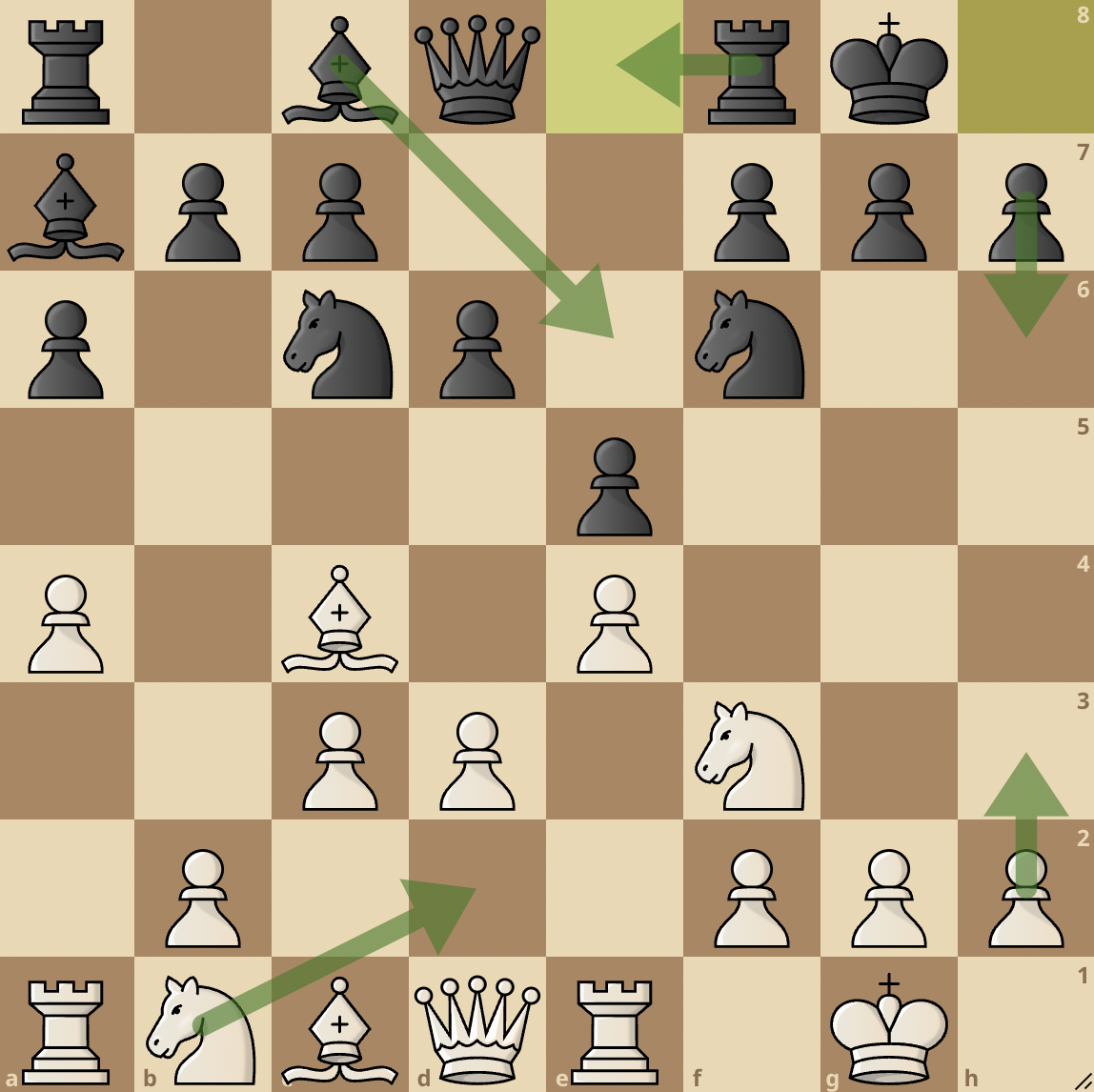
5. d4

5. d4 is a much sharper line than d3. This line is known as the center attack. White finally executes the d4 thrust and tries to claim the center for themselves.
Black is forced to make a decision and they elect to capture the pawn with 5…exd4. After this capture, White can choose between two moves, e5 or cxd4. Let’s take a look at both moves.
6. e5
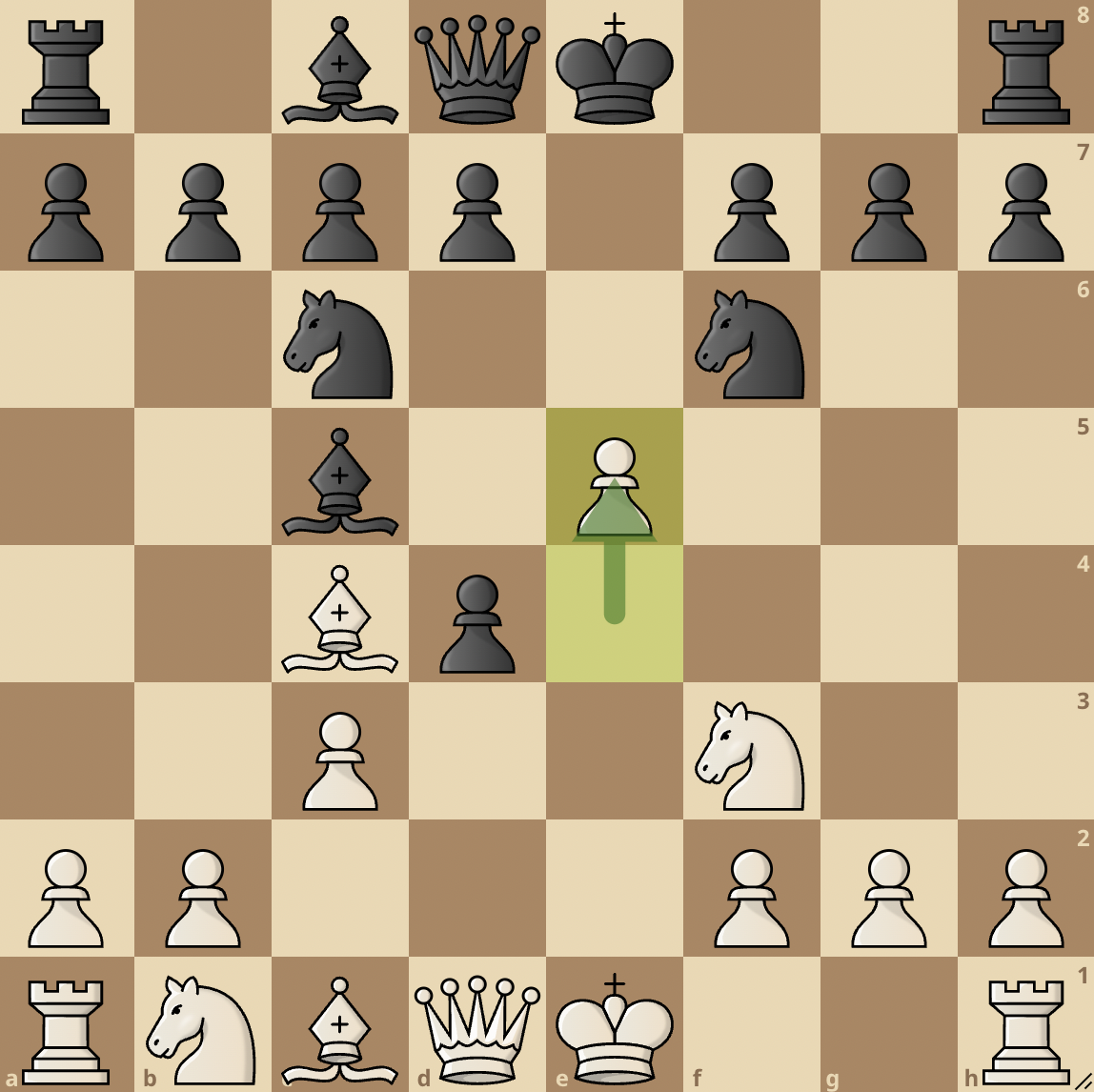
After 5…exd4, White continues with 6. e5, attacking the f6 knight and forcing Black to choose how they want to continue. Black does not want to move the knight twice in the opening so they play a better move which is 6…d5.
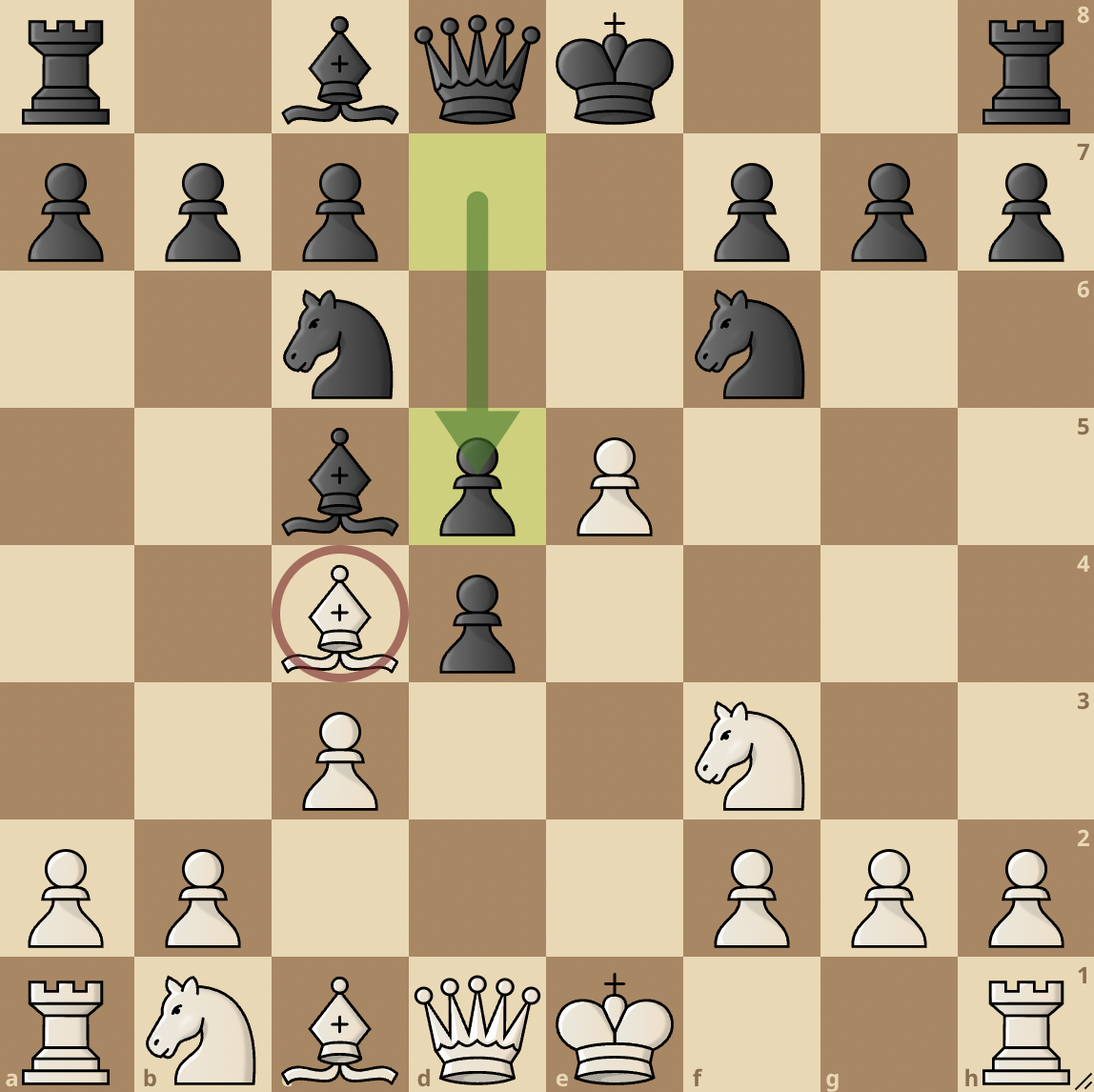
…d5 is a counterattacking move by Black as they now attack White’s light-squared bishop. White plays 7. Bb5, pinning down the c6 knight and Black plays 7…Ne4. White now recaptures their pawn with 8. cxd4 and Black plays 8…Bb6.
The game continues this way: White plays 9. Nc3 and Black castles with 9…0-0. White develops their bishop with 10. Be3 and Black does the same with 10. Bg4.
…Bg4 comes with a pin on the f3 knight so White kicks it away with 11. h3 and Black moves back with 11…Bh5. White continues with 12. Qc2, increasing the pressure on the e4 knight and Black defends with 12…Bg6. White now plays 13. Qb3, pressuring the d5 pawn, and after Black plays 13…Ne7, White castles with 14. 0-0.
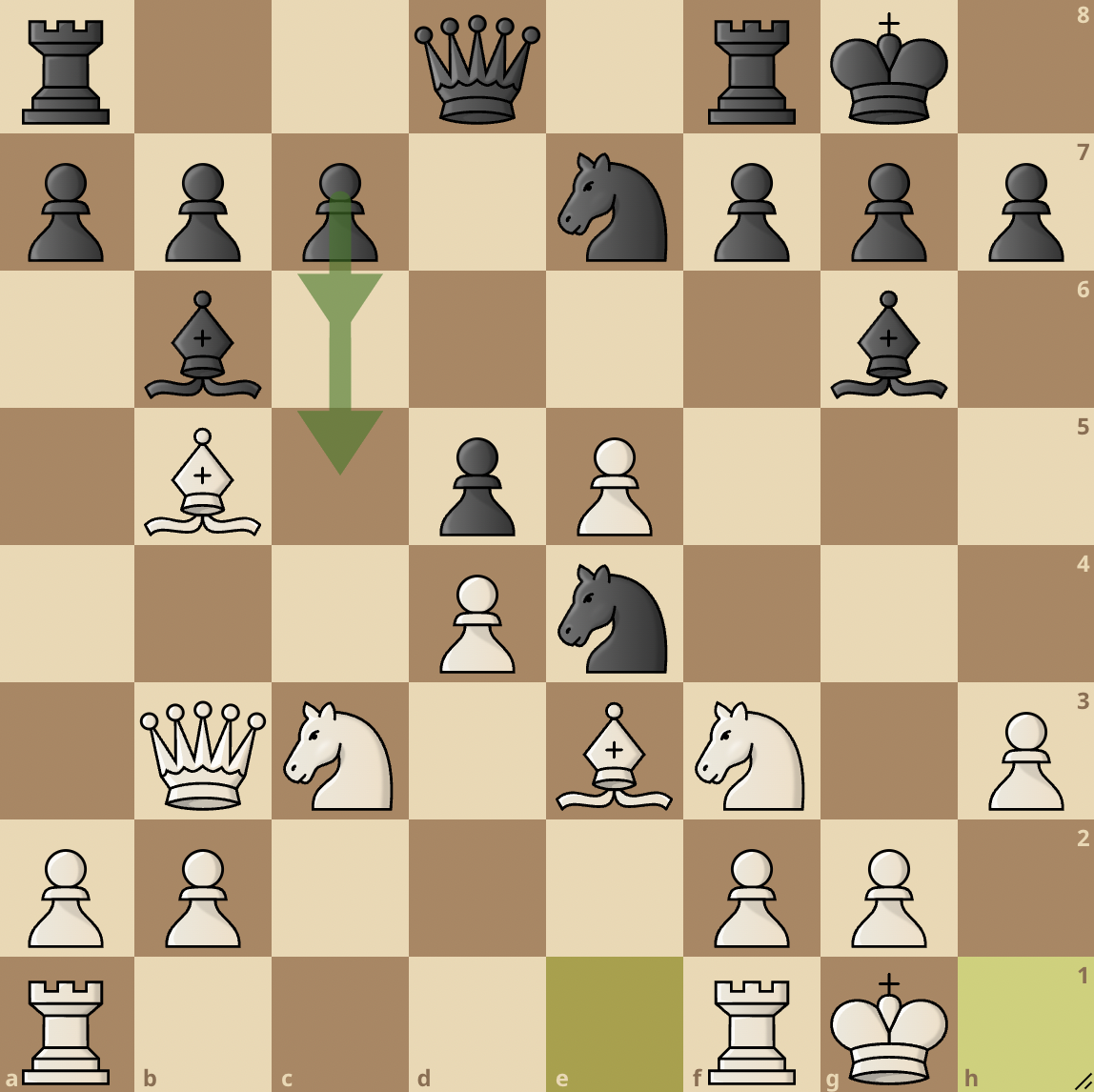
From here, we can see that White has a promising position, all their pieces are developed and they can go into the middlegame with a nice setup.
6. cxd4
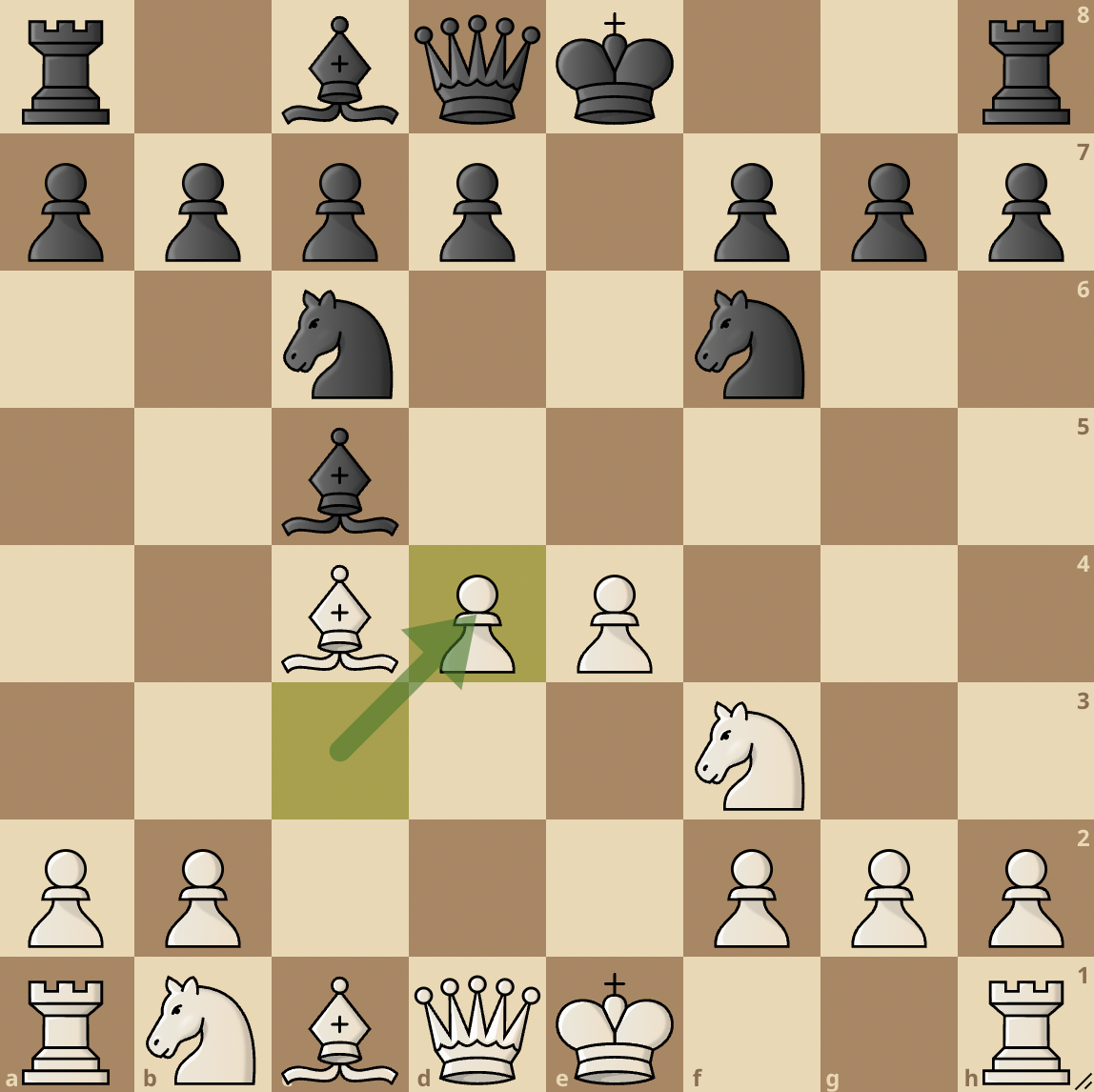
White can decide to recapture the pawn immediately with 6. cxd4. Black now continues with 6…Bb4+ and White defends with 7. Bd2.
The most popular continuation here is for Black to exchange bishops with 7…Bxd2+ and after 8. Nbxd2, the game continues.
However, if Black thinks the e4 pawn is free and they choose to capture it with 7…Nxe4, White will play 8. Bxb4 and Black recaptures with 8…Nxb4. White now plays 9. Bxf7+, sacrificing the bishop and ensuring that Black cannot castle their king.

Black has to capture with 9…Kxf7 and after the king captures, White will win the knight with 10. Qb3+ and after the king moves with 10. Qf8, the knight on b4 will fall.
From this position, Black cannot castle however the position is still very much equal as the queens will be exchanged after 10. Qb3+ Kf8 11. Qxb4+ Qe7 12. Qxe7+ Kxe7.
Giuoco Pianissimo
1. e4 e5 2. Nf3 Nc6 3. Bc4 Bc5 4. d3

The Giuoco Pianissimo translates to “Very Quiet Game” It is a sub-variation of the Giuoco Piano, however, it is a tamer and quieter variation.
With 4. d3, White reinforces the e4 pawn and announces that they are not interested in a confrontational game, but rather a calm and positional one. d3 also opens lines for the dark-squared bishop to be developed.
The Pianissimo is an option for players who prefer calm games.
Evans Gambit
1. e4 e5 2. Nf3 Nc6 3. Bc4 Bc5 4. b4

While most of the lines in the Giuoco Piano are calm and quiet, the Evans Gambit is an exception. White offers the b-pawn as a sacrifice in order to gain quick development and a fast attack.
Learn more about this variation in our article on the Evans Gambit.
Successful Deployments
Touch the moves or move the board around for a better interactive experience.
Garry Kasparov v Rafail Gabdrakhmanov, URS (1977)
This game by Garry Kasparov and Rafail Gabdrakhmanov is an excellent lesson on how to play the Giuoco Piano, enjoy!
Tempura Radjabov v Baskaran Adhiban, World Blitz (2023)
Teimour Radjabov and Baskaran Adhiban are two incredibly strong grandmasters. At the World Blitz Championship in 2023, the pair clashed over the board and Radjabov employed the Italian Four Knights Variation of the Giuoco Piano to win a nice game against Adhiban.
Alireza Firoujza v Magnus Carlsen, Chessable Masters Div 1 W (2024)
Worried about how to play against the Giuoco Piano? Then watch this game and learn from the Mozart of Chess himself, Magnus Carlsen, and see how he won a very nice game with the black pieces against Alireza Firoujza.
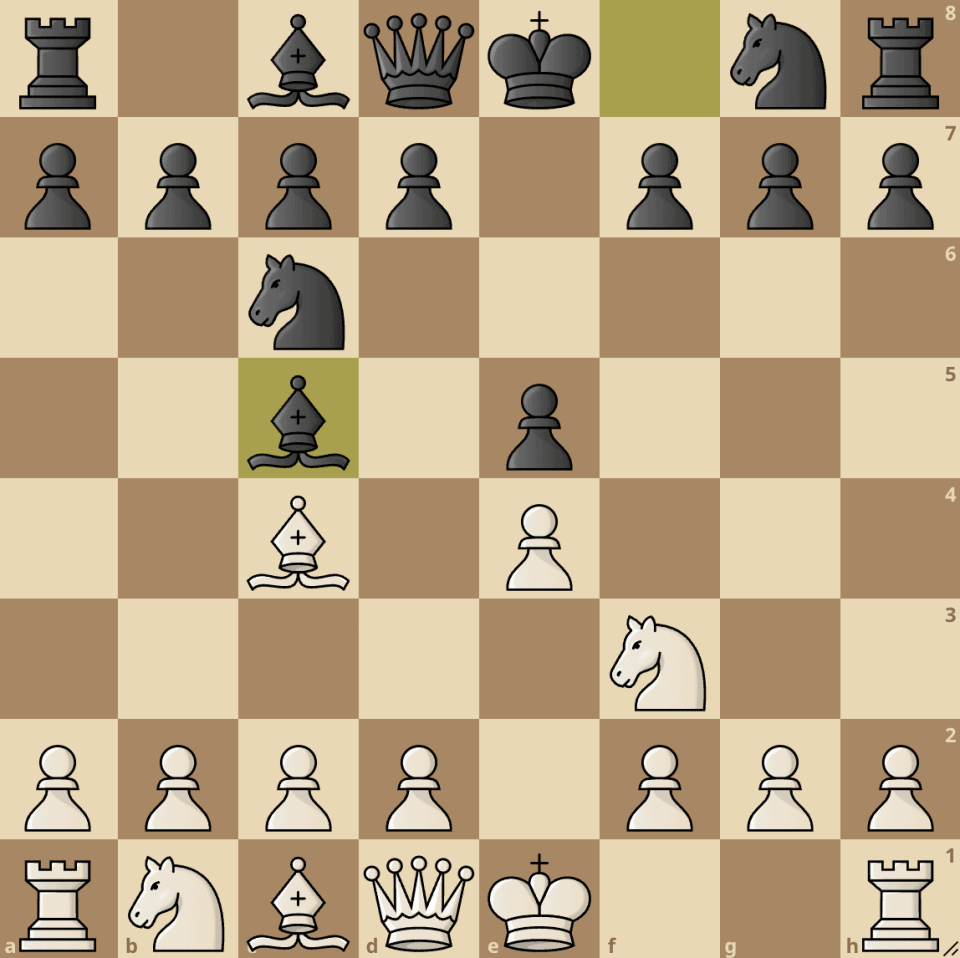





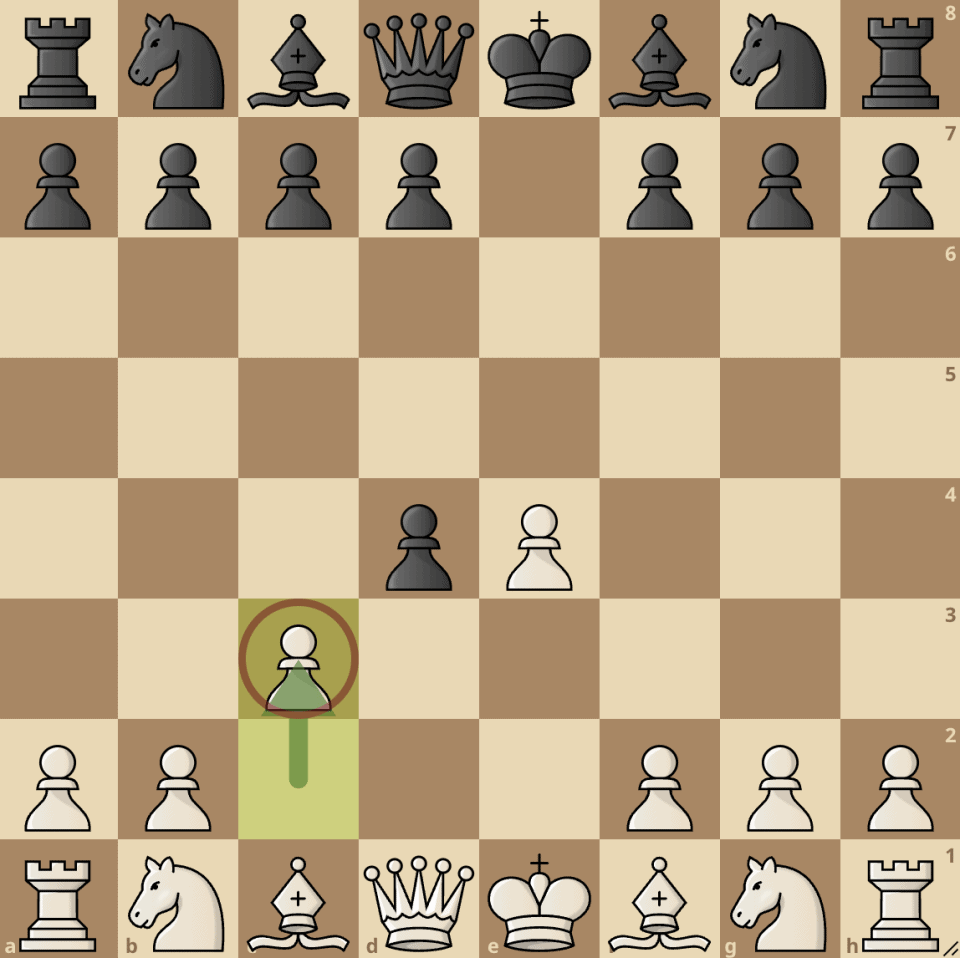
join the conversation